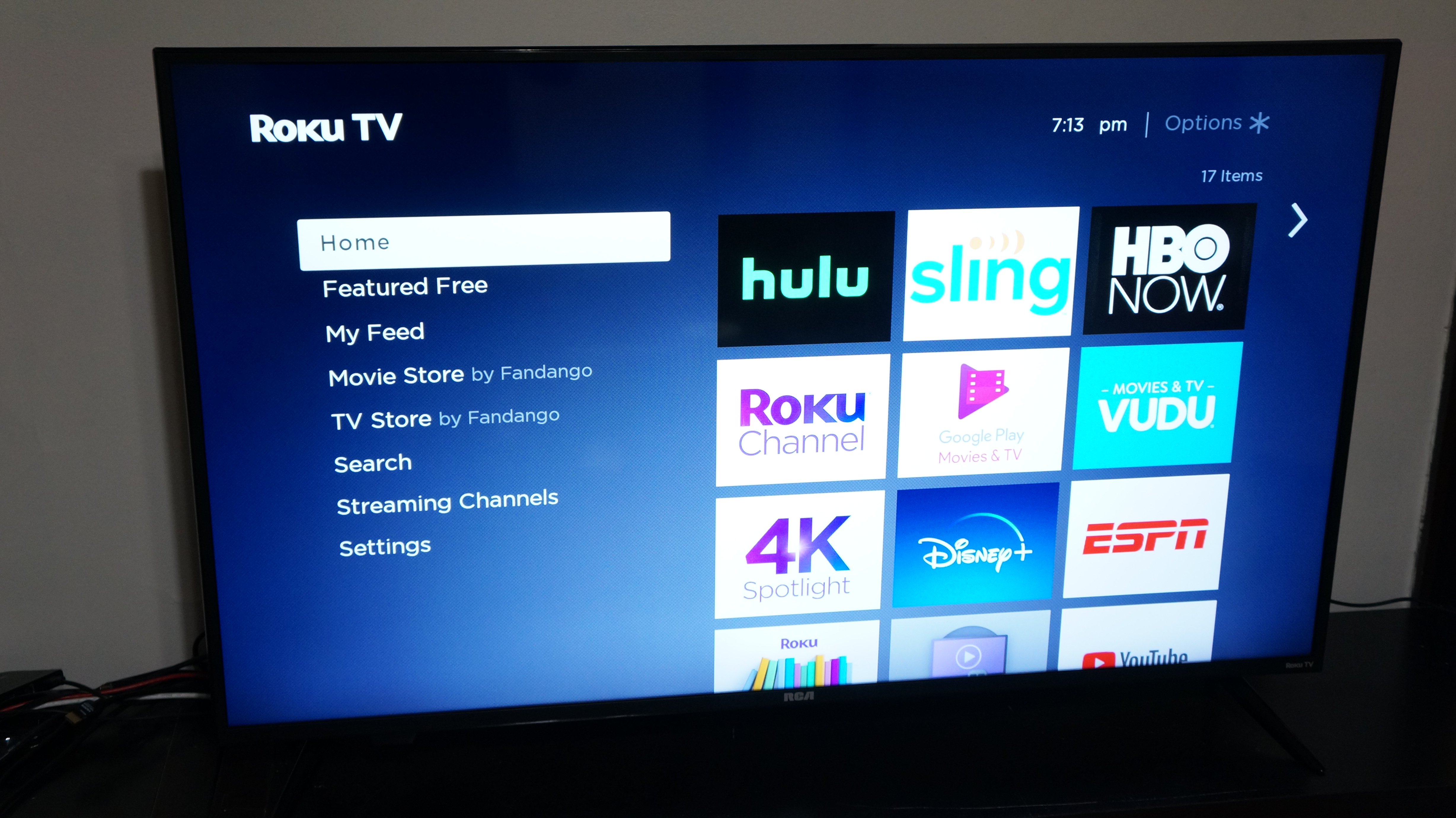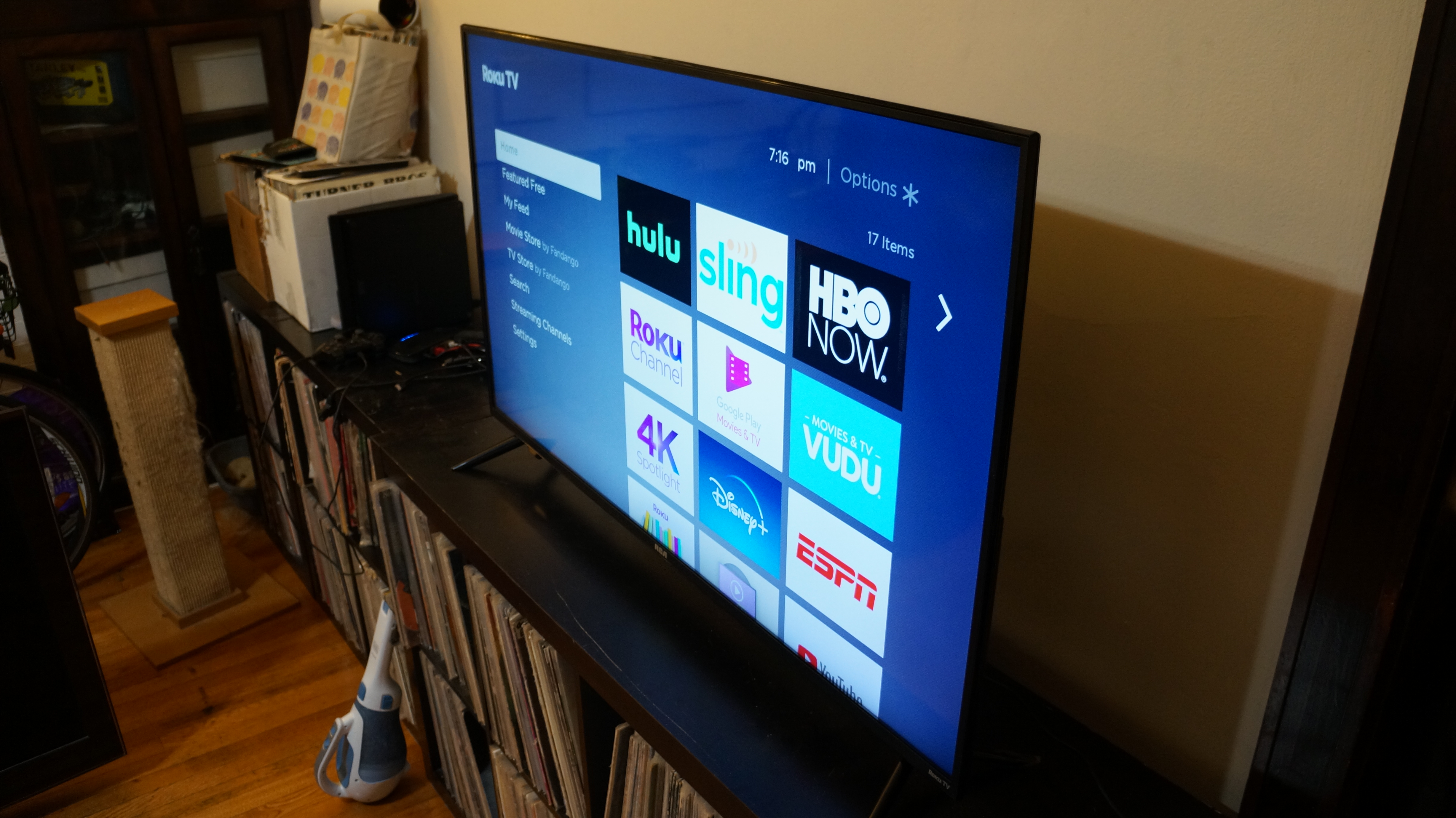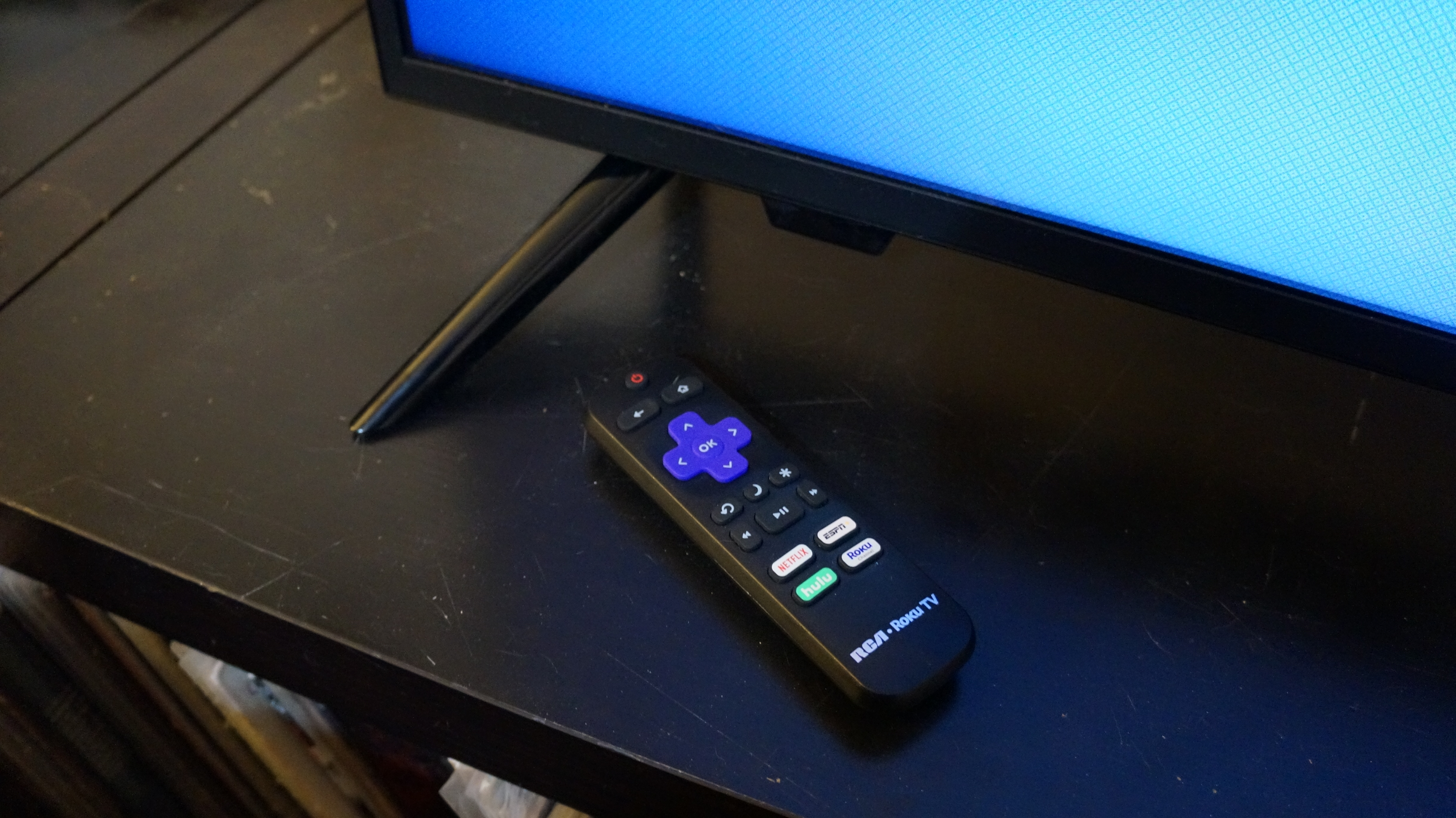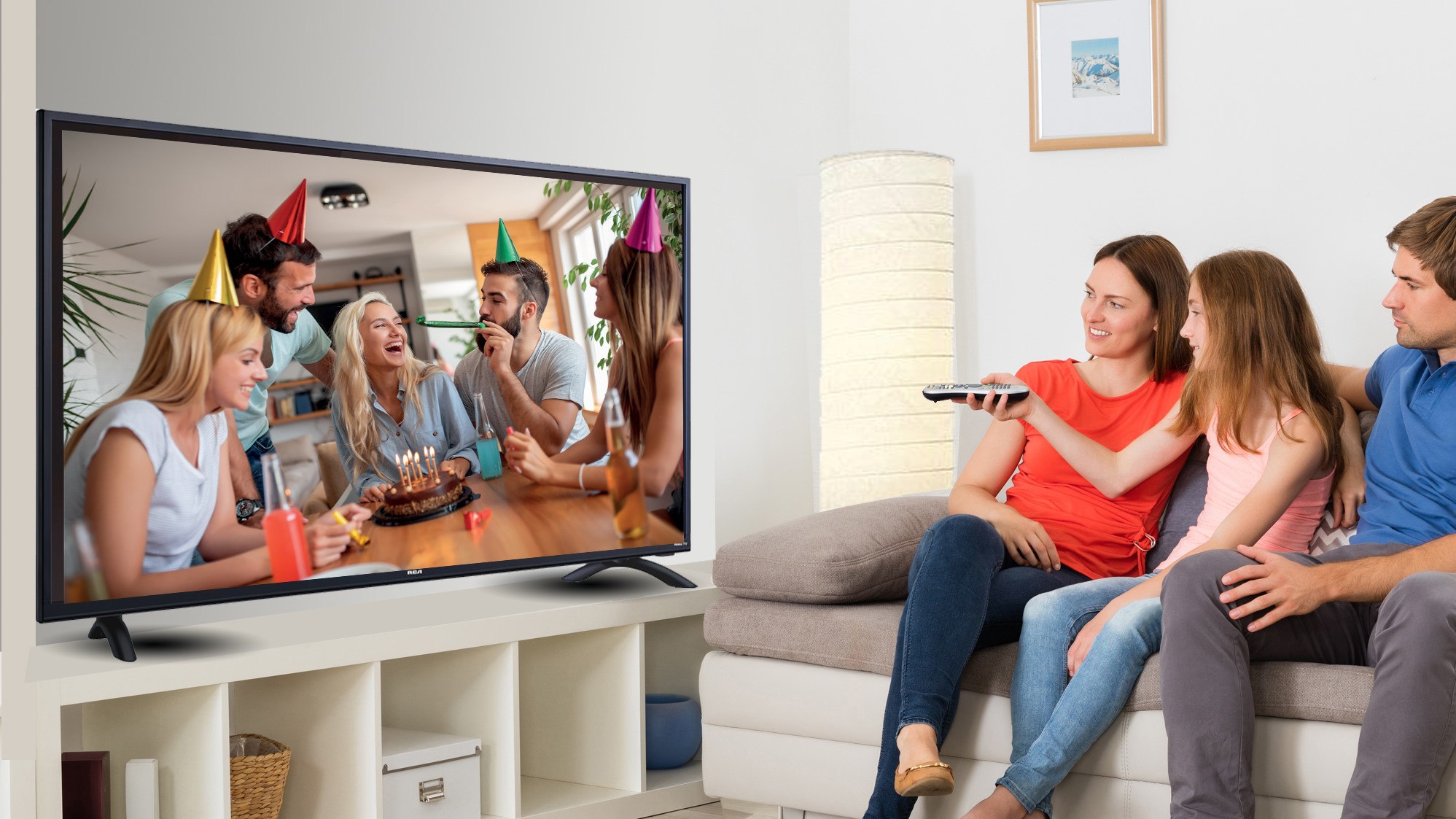TechRadar Verdict
The RCA RTRU5027 delivers 4K and a handy Roku TV platform at such a low price that if you can overlook its weak HDR performance and sketchy audio processing it's a standout TV in the budget category.
Pros
- +
Rock-bottom price
- +
Roku smarts
- +
Decent design
Cons
- -
Dim display
- -
No volume leveling
- -
Limited viewing angles
Why you can trust TechRadar
When it comes to budget TVs, few come cheaper than this $269 50-inch RCA model that offers support for 4K, HDR, and built-in Roku TV to top it off.
This is among the cheapest 4K TVs we’ve seen, costing well below models like the $599 Hisense 55H9F and even the 43-inch Vizio M-Series Quantum at $349.
This RCA 50-inch 4K TV doesn’t do much to move display technology forward, but it does bring high-end features down to a mass market price, and its shortcomings are easy to overlook (and sometimes remedy) at this price.
Price and release date
The RCA RTRU5027 was available starting back in 2017, for $699, but these days you can find it at Walmart for just $269 - making it one of the cheaper 4K HDR TVs on sale at the retailer.
Design
With its plastic back and minimal weight, this RCA TV comes out of the box feeling about as cheap as its price tag suggests. It only weighs 25.4 pounds (11.5Kg), which makes it easy as ever to set up. That weight all sits on a pair of legs that don’t take up too much surface area on a media center.
Once it’s set up, the cheapness of the design is easier to ignore. The bezels on it are surprisingly thin, with only about half-inch bezels on all sides except the bottom, where it’s only slightly thicker. The majority of the TV is just about an inch thick, but the lower half grows to about 2.5 inches thick.
That extra thickness helped it avoid skimping on ports. On offer are three HDMI ports, a composite video input, an Ethernet port, a USB port, an antenna input, a 3.5mm audio output, and an optical audio out. Extra HDMI ports may be welcome, but they’re less necessary thanks to the inclusion of the Roku Smart TV platform, which lets the RCA RTRU5027 bring the entertainment with just a power and internet connection. The Ethernet port is an ideal way to pipe 4K content into the TV, but it also supports 2.4GHz and 5GHz Wi-Fi connections.
Oddly, there’s an IR receiver near the bottom left of the display that we never saw in promotional pictures of the device. It juts out and disrupts the smoothness of the design, plus it can be finicky if anything (ahem, cats) get in the way
Design TL;DR: It may not be the thinnest, but no one is going to look at the 50-inch RCA 4K Roku TV from the front and think you’ve got an ancient TV – except for the IR receiver jutting out at the bottom.

Smart TV (Roku TV)
When it comes to smart TV platforms, Roku’s is among the best. It has access to almost every streaming service you’ll want, including the ability to cast content to the TV. The operating system is surprisingly quick considering RCA likely didn’t spring for a premium processor to run it. That said, it occasionally hitches when trying to scrub through content within apps, particularly when it’s 4K content.
Adding different apps is easy, and the platform is perfectly straightforward. That even carries over to the display settings, which feel more like a seamless part of the Roku TV operating system than a labyrinth of menus and submenus buried in a user interface from the late ‘90s.
The Roku remote included is serviceable, but uses IR. As a result, there’s no headphone jack or voice control on the remote, but the Roku app on a cell phone can handle those features instead.
Smart TV TL;DR: it’s an impressive smart OS to get in a TV at this price when considering that a standalone Roku device capable of 4K HDR would cost $39 on its own without any screen.
HD/SDR Performance
There isn’t too much to get excited for from the RCA RTRU5027’s performance. It’s a basic TFT LCD offering up a meager 250-nit peak brightness. Most flagship smartphone displays offer substantially brighter displays, and any TV boasting HDR should really top 400 nits. (In fact, the UHD Alliance sets its recommended specs at 1,000 nits...) Of course, this is a budget display, and it’s offering just about a nit for every dollar in its price tag.
In a sunny room, the display can’t hold in dark scenes even with the anti-glare finish helping obscure reflections somewhat. Medium-bright scenes handle well enough, though. In a dark room, the screen is much easier to see, so it would be wise to invest some of the money saved on this TV in a decent set of window blinds.
That said, the RCA RTRU5027 puts on a decent image when the lighting conditions are right: In a room with overhead lights on, the display actually musters some impressive black levels, enough to enjoy The Dark Knight on. But, there’s a definite sweet spot for the black levels. In a dark room, the backlight glow is apparent. And, the deep black levels quickly vanish when viewing from an angle.
As far as an HD picture goes, the RCA RTRU5027 presents it crisply. There doesn’t seem to be any fancy upscaling going on. Watching Witcher on Netflix in HD, details were still clear, from wood grain to skin. But we’d expect almost as much from a 1080p screen at this size from 10 feet away, but up close it’s clear enough that there’s no magic happening to increase the perceived resolution. Still, the image was sharp enough to spoil some of the CGI effects in Inception.
The dynamic range is fair. In The Witcher, high contrast scenes with a bright white sky and Nilfgaardians in black armor did see some of the darkest and brightest detail muddled, but otherwise the picture looked about as good as we could expect from HD and SDR. (Note: Yes, we’re aware The Witcher is available in 4K HDR, but that’s not how we watched it.)
HD/SDR TL;DR: The picture looks good, but there’s no magical upscaling. Lighting conditions and viewing angle can dramatically impact the experience.

4K/HDR Performance
Watching 4K content, there’s no question that the display is sharp. That shows up particularly well in fine hairs, like we see so much of in the Blender animation Cosmo’s Laundromat. It truly lends a lifelike texture to the sheep. Though we had to get closer to the screen to see all the extra detail 4K offered. The Hunters on Prime Video also had plenty of detail in 4K, as did The Boys.
But, where 4K succeeds at delivering all that extra granular detail, the HDR mode doesn’t do as great a job delivering extra color and light detail. It may be to its credit that it doesn’t try to force some overly saturated, punchy colors, but the result of HDR is almost muted colors compared to SDR. We rewatched the opening barbecue scene of Hunters in SDR, and many of the colors were more saturated than in 4K HDR on the RCA RTRU5027.
That doesn’t necessarily make it bad. Cosmo’s Laundromat in 4K HDR is still a punchy, colorful delight. The glowing red eyes of Homelander in his drug-house raid at the opening of the Season 1 finale looked spectacular enough, with the glowing red eye lasers brightening up the scene only for it to quickly fall back to black. It’s not easy to get detail out of the dark areas of the scene, but there is some detail.
The viewing angles continue to be an issue for HDR. Dark scenes are harder to see from a low angle, even just slightly below the center point of the display. We watched a good test video for HDR, “My Blender Simulations in HDR.” In it, the pure black backgrounds looked great when viewed from the sweet spot. But, the highlights in the scene show how much the 250-nit peak brightness doesn’t have the headroom for compelling HDR.
Beyond the RCA RTRU5027’s lack of performance in HDR, it also has a strange side effect: HDR mode adds a warmer tint to white, giving it an orange hue, that’s most noticeable when the display is just showing white text on a black background. We don’t see this in SDR content, as with the HBO Now logo at the start of any HBO content.
For gamers, RCA reports an 8ms response time for the RTRU5027, but doesn't support adaptive sync technologies like Nvidia G-Sync or AMD Free Sync.
4K/HDR TL;DR: The resolution is plenty sharp for a TV this size, but the display can’t get bright enough to offer a compelling HDR experience.

Sound
The audio on the RCA RTRU5027 is a mixed bag: The speakers work rather well, with plenty of sound for even a sizable living room, but it’s how the TV uses its speakers that causes the trouble.
From HBO to Netflix, the sound is all over the place. Sometimes it’s perfectly loud at a low volume setting, other times it’s hard to hear at with the volume dialed up. Then sound effects like gunshots, tires squealing, or knives stabbing will sound thin in the audio mix. That happens whether the sound mode is set to normal or to leveling.
An audio level that was working perfectly well on Amazon all day would suddenly be hushed on HBO Now with Dolby Audio. The closest analog to what is sounded like is a switch from front-facing speakers to bottom-firing speakers on a laptop. It is not subtle, and it is not beneficial.
Sound TL;DR: There’s plenty of power in the speakers, but the sound processing is hit or miss. It may be worth taking advantage of the audio ports to pair with a soundbar.
Final verdict
As it stands, the RCA RTRU5027 is one of the most affordable ways to jump into the 4K ballpark. Its performance feels more than adequate at the price, and the Roku TV platform is a strong point.
But, that said, HDR performance leaves it lagging behind the field, especially when another $100 can get you the Vizio M-Series M437-G0, which offers a higher 400-nit brightness, 12 local dimming zones on a quantum-dot display with support for Dolby Vision, and built-in voice control.
- Looking for a new big-screen TV? Here's our list of the best 4K TVs
Over the last several years, Mark has been tasked as a writer, an editor, and a manager, interacting with published content from all angles. He is intimately familiar with the editorial process from the inception of an article idea, through the iterative process, past publishing, and down the road into performance analysis.

